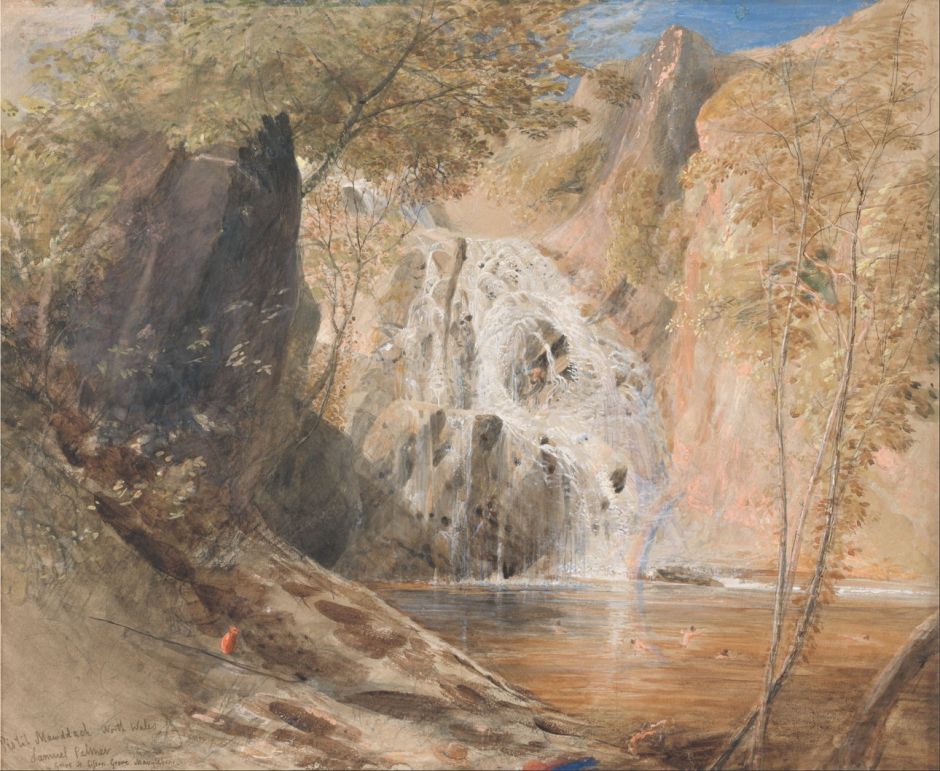This weekend we’re off to Wales. It may seem a bit unseasonal, but in the south the Gulf Stream keeps the temperatures up, and in the north, if we’re lucky, there may be some snow on the peaks in Snowdonia. Besides, I lived in Wales for four years, and it’s a wonderful country with wonderful people.
It also happens to have had a key role in the development of British landscape painting, with many of the masters visiting Wales on several occasions. In this article and tomorrow’s sequel, I show a selection of my favourite paintings of Wales.

Richard Wilson was one of the founding fathers of proper landscape painting in Britain, as well as the founding father of Welsh painting. A founding member of the Royal Academy, he also taught Thomas Jones, and was an influence on John Constable and JMW Turner. Most of his surviving landscapes are narrative and based on Italianate views, but his late pure landscape painting of Llyn-y-Cau, Cader Idris (c 1774) delivers a frisson of excitement, with its dark and limpid lake, and the steep crags facing the viewer. This former volcano is well south of the main massif of Snowdonia, and delivers superb rugged walking.

John Sell Cotman was another important British landscape painter, although few of his paintings are currently accessible. This view of Aberystwyth Castle (1796-1806) gives an idea of his early work.

Like Cotman, James Ward is underrated today, but was an avid sketcher in oils. One of the finest of those sketches is his panoramic Landscape near Swansea, South Wales (c 1805), which he squeezed onto a small panel. The extensive smoke rising from the distant valley was from the heavy industries based on coal and iron which had been spreading through the previously rural areas of South Wales.

Samuel Palmer made his first visit to North Wales in 1835, when he painted this initial watercolour of Pistil Mawddach, North Wales (1835-36). This waterfall, known now as Rhaeadr Mawddach, is on the upper reaches of the River Mawddach near Snowdonia. At the time it was far less known than the nearby vertiginous mountains of the Snowdon range.

Palmer seems to have visited the falls a second time the following year, and then to have painted this finished version in oils, The Waterfalls, Pistil Mawddach, North Wales (1835–36).

Palmer also painted dramatic scenery of the ‘sublime’, such as views of Snowdon from Moel Siabod, Conwy Castle, and this Rocky Landscape in Wales (1835-36), all in watercolour.
As hinted at in James Ward’s view towards Swansea, much of South Wales became heavily industrialised during the eighteenth and nineteenth centuries.

George Childs shows the consequences in a series of paintings of South Wales, including this of Dowlais Ironworks (1840). This site at Merthyr Tydfil, South Wales, opened as a single iron furnace in 1760, and by the time that Childs painted this was providing iron for the railway tracks which were spreading throughout Britain and much of Europe. It operated eighteen blast furnaces, employed over seven thousand people, and produced over 80,000 tons of iron each year.

In the autumn of 1860, William Dyce stayed in the Conwy Valley in Wales for six weeks, where he sketched and painted avidly. After his return to London, he painted this in oils, showing the rough and rugged scenery above the valley, a rock outcrop filling much of the left half of the painting. In its centre is an old woman, and to the right a young one, each dressed in traditional clothes, and knitting. A sliver of a crescent moon is visible low in the sky.
The younger woman wears a formal ensemble which had recently been revived and designated the ‘Welsh national costume’, as might be worn for Eisteddfods and other special occasions. They are both knitting stockings from scavenged scraps of wool, an activity which might have been common earlier in the century and performed indoors at home. It had largely disappeared by 1860, and is conspicuously incongruous for such an outdoor location. But deciphering Dyce’s symbols here isn’t straightforward by any means, and as far as I’m aware the reading of this painting remains an enigma.
During the 1850s the Norwegian landscape artist Hans Gude’s paintings had aroused some interest in the UK, so in 1862 he travelled to Wales to try to develop his British market.

This painting of what he called ‘Eføybroen’, which might be an ‘Efoy’ Bridge, in North Wales was completed in 1863 from studies made of the motif in the previous autumn.

He also painted some grander landscapes of The Lledr Valley in Wales (1864), where he stayed during this campaign. Sadly, although exhibited at the Royal Academy, Gude’s paintings of Wales didn’t bring him the commercial success he had hoped for.
Tomorrow I’ll resume with one of the most spectacular paintings in nineteenth century British landscape art, which is also one of the few for which we have not just a date but a time.

